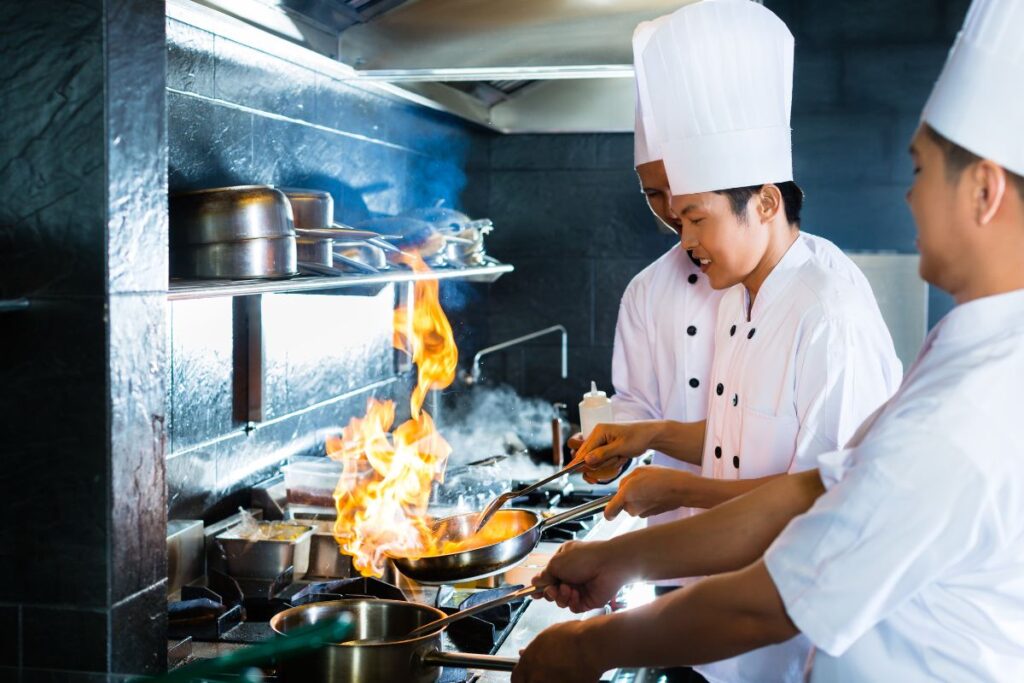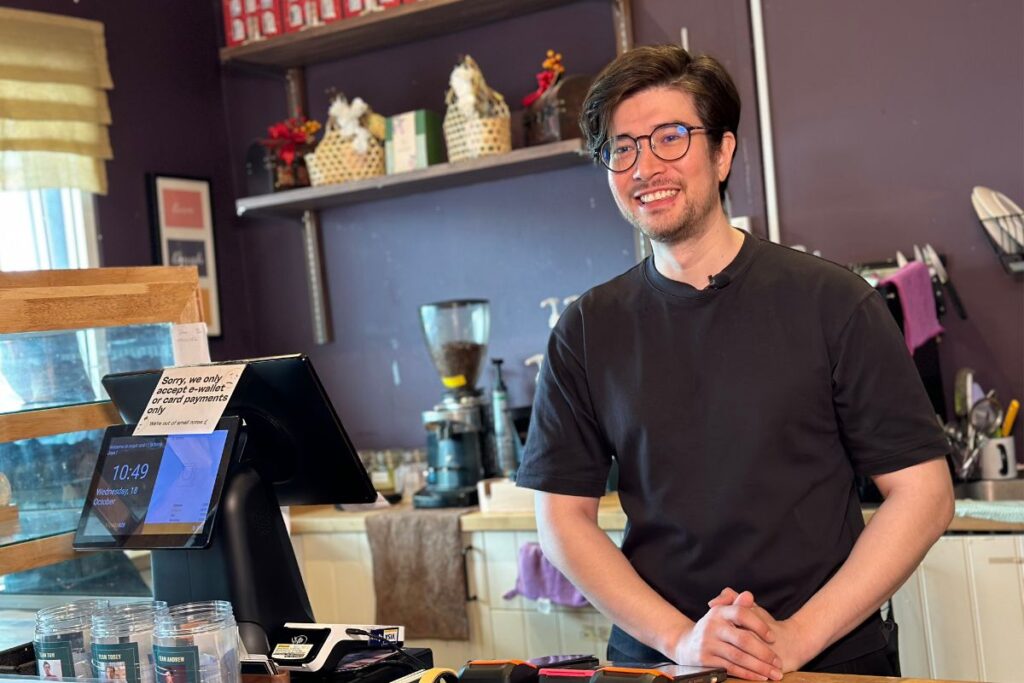The F&B industry in Malaysia is evolving faster than ever. From AI-powered tools to more advanced loyalty strategies, the way restaurants, cafés, and even street food businesses operate has changed dramatically. If you want to stay competitive in 2025 and beyond, it’s no longer enough to serve great food.
You also need to adapt to how the industry is shifting.
Whether you’re running a hawker stall in Penang or a restaurant in the heart of KL’s food scene, here are the biggest F&B trends in Malaysia you need to know.
Tech-Powered Dining: The New Standard in F&B
In many F&B businesses across Malaysia, you’ll still see staff handwriting receipts, shouting orders to the kitchen, or scrambling to count stock manually at closing time.
But in 2025, these manual processes go beyond just being inefficient. They slow down operations, increase the risk of errors, and prevent staff from focusing on what truly matters: delivering great food and service.
The shift toward digitalisation starts with customer experience. QR ordering systems have become increasingly common in dine-in restaurants, cafés, and even hawker stalls. Instead of waiting for a server or queuing at a counter, customers scan a QR code, browse the menu, place their order, and pay instantly from their mobile phone.
StoreHub’s QR Order & Pay is one example of this — it simplifies ordering, reduces waiting time, and eliminates miscommunication between customer and cashier. Because staff no longer need to juggle menus and receipts; they’re freed up to focus on delivering faster, more attentive service.
Behind the scenes, more kitchens are swapping paper tickets for Kitchen Display Systems (KDS). Orders sent from the POS system appear in real time on digital screens, sorted by priority and course. This reduces the need for verbal back-and-forth, which can lead to errors during peak periods.
With a KDS, the kitchen team sees exactly what needs to be cooked, in what order, and for which table — improving consistency, speeding up prep time, and reducing food waste from missed or wrong orders.
Inventory management has also evolved. Instead of relying on end-of-day stock counts or guessing when to reorder ingredients, smart inventory tools integrated with the POS system now monitor stock usage in real time. These systems send auto-alerts when supplies are running low and can even suggest reorder quantities based on past consumption patterns. This means fewer emergency supply runs, reduced overstocking, and better control over food costs, which is crucial given rising ingredient prices.
Meanwhile, cloud kitchens and virtual brands continue to reshape the F&B scene in KL, particularly in the booming delivery market.
These setups allow businesses to operate multiple brands under one roof, without the high overheads of a dine-in space. For example, a single kitchen could run a burger brand, a rice bowl brand, and a dessert brand all from the same location. With a centralised POS system that syncs orders from Grab, foodpanda, and other platforms, owners can manage everything — menus, pricing, stock, reporting — in one place.
It’s a lower-risk way to scale and experiment with new concepts, especially for startups and solo operators.
Loyalty Is More Important Than Ever

With new cafés, restaurants, and food stalls popping up every week, Malaysia’s F&B scene is more competitive than ever. Diners are spoilt for choice, which means it’s no longer enough to focus on attracting first-timers. The real challenge is getting them to come back.
That’s where loyalty comes in. A well-run loyalty programme keeps your tables full by rewarding repeat visits and creating more reasons for customers to return.
Paper stamp cards used to be the go-to solution, but they had their limits. Cards get lost, stamps get missed, and there’s no easy way to track actual customer behaviour. It’s a system that depends too much on memory — both the customer’s and your staff’s.
Today, more F&B businesses are looking for sustainable ways to drive customer loyalty — and one of the most effective strategies is adopting a digital loyalty programme that’s integrated directly into their POS system.
StoreHub Loyalty is a great example of this. Fully built into the StoreHub POS, it automatically rewards customers with cashback, tiered points, or vouchers for every purchase, with no need for physical cards or manual tracking. Every transaction is recorded, allowing you to build a rich customer database — so you know exactly who your regulars are, how often they visit, and what they usually order.
This data makes it easy to customise your loyalty strategy. Want to give bonus points to weekday diners? Offer cashback for high-ticket spenders? Launch a “Buy X, Get 1 Free” promo for bestsellers? It’s all configurable within the same system you use to run your daily operations.
You also get access to real-time reports to see which rewards are working — and where you might need to adjust. And when a customer is close to earning a reward, StoreHub can automatically send them an SMS reminder, prompting that next visit.
Whether you’re running a café, dessert bar, or full-service restaurant, a smart loyalty system like StoreHub’s turns one-time diners into regulars — and regulars into loyal fans who keep the momentum going even during slow periods.
AI Is Reshaping the F&B Industry
AI in the F&B sector is projected to grow from USD 13.39 billion in 2025 to USD 67.73 billion by 2030. This rapid growth highlights how AI is transforming how restaurants operate in Malaysia and globally — from marketing to inventory management.
On the operations side, AI tools help analyse sales trends, customer preferences, and ingredient costs to improve pricing strategies and plan menus more effectively. Some F&B businesses are even using AI to test new flavour combinations, cutting down on R&D time and reducing food waste.
In marketing, AI allows restaurants to run personalised campaigns at scale. Instead of sending the same offer to everyone, you can target specific customers based on their habits — like giving matcha lovers a weekend discount, or sending promos on items they’ve ordered before.
Inventory management is also getting smarter. With AI-powered forecasting, restaurants can analyse past sales, and seasonal trends to predict demand with greater accuracy. This helps ensure you order just the right amount of stock — reducing waste, preventing stockouts, and protecting your profit margins.
Customer service is evolving too. Many restaurants now use AI chatbots to answer FAQs, take reservations, and even suggest popular add-ons based on customer preferences. It’s a simple way to reduce the pressure on staff during busy hours, speed up response times, and improve the overall guest experience.
Michelin Recognition Is Raising the Bar for Local F&B

Photo Credit: foodforthought.com
Malaysia’s F&B scene has always been full of flavour but Michelin recognition is taking things to the next level.
In cities like Kuala Lumpur and Penang, Michelin-rated restaurants are setting new benchmarks in service, consistency, and presentation. And while Michelin used to be associated with fine dining, that’s changed. Homegrown eateries and small family-run businesses are now earning stars and global recognition.
Auntie Gaik Lean’s Old School Eatery in Penang, for instance, was awarded a Michelin star for its authentic Peranakan dishes — proving that excellence can come from humble kitchens with deep roots and strong traditions.
As more diners become exposed to international standards, expectations are shifting. It’s no longer just about how good the food tastes, customers are now paying attention to everything: how the dish is plated, how the space is designed, how the story behind the brand is told.
F&B owners are responding in kind. Some are levelling up their visual branding with cohesive menus, signage, and interiors. Others are refining their core dishes — improving presentation, tightening quality control, or sourcing better ingredients. Even the way F&B businesses show up on social media is evolving, with more emphasis on storytelling and customer connection.
It’s a mindset shift. Today’s diners are looking for more than just a meal. They’re also looking for an experience they’ll want to share, revisit, and recommend. That’s pushing even small, independent eateries to operate with more intention and pride in what they do.
Final Thoughts
The F&B industry in Malaysia is changing rapidly — and the trends we’re seeing in 2025 are just the beginning.
If you’re still running things manually, relying on guesswork, or ignoring what your customers really want, you’re falling behind. Whether it’s adopting a smart POS system, setting up a loyalty programme, or exploring how AI can improve your operations, now’s the time to invest in tools that keep your business competitive.
From bustling KL food hubs to quiet cafés in suburban neighbourhoods, one thing is clear: Malaysian diners are more tech-savvy, quality-conscious, and loyalty-driven than ever.
The businesses that grow in 2025 will be the ones that embrace change — not wait for it.



